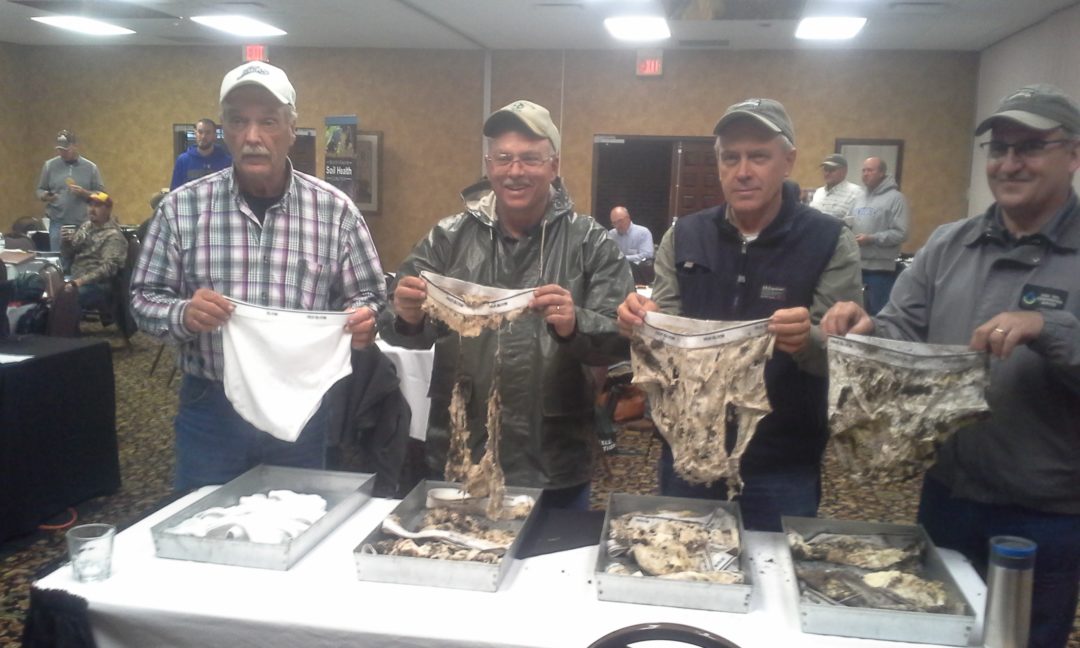Tighty Whitie demonstration shows soil's microbial activity. Left to right: Control, brief was buried in a no-till field with growing cover crops, brief was buried in a field that was mulch reduced-tillage soybean field and brief was buried in a field that was conventional tilled corn.
For most soil health advocates, the importance of soil microbiology is recognized, although difficult to demonstrate. That is until now.
"We used something most every farmer has on hand — briefs — and developed a very simple demonstration that shows the results crop production management has on microbiology and in turn soil health," says Anthony Bly, South Dakota State University Extension soils field specialist.
For the demonstration, mens' white cotton briefs were buried in different soil and then after a set number of days were retrieved.
"The premise of the demonstration is the fact that soil microorganisms require carbon to survive. Men's cotton underwear briefs contain high amounts of carbon. Therefore, decomposition of the briefs after they are retrieved provides a good indication of soil microbiological activity, and ultimately, soil health status," Bly explains.
The demonstration was held during the South Dakota Soil Health Coalition's first Soil Health School in the Aberdeen and Ipswich this past September.
The briefs were buried to about the waistline in the soil 5 weeks prior to the school. They were buried in three sites including: corn with conventional tillage; soybeans under mulch tillage and no-till soil with a growing cover crop.
Soil health school participants had the opportunity to extract the briefs and view the results of five replicates in each field.
Importance of Soil Microbiology Activity
Soil microbial activity is a key soil health indicator, says Sara Berg, SDSU Extension agronomy field specialist.
"Most seasoned soil health producers recognize the value of the soil microbial kingdom and often refer to it as ‘the herd,’” Berg says.
Bly explained that soil microorganisms increase plant residue decomposition, which releases plant nutrients.
Revealing Results
A new brief was compared to one brief from each field. Almost nothing remained of the brief buried in a no-till field with growing cover crops, indicating extensive soil microbiological activity. The brief buried in a field of mulch reduced-tillage soybean field had less material remaining than the brief buried in the field of conventional tilled corn (far right) had the most material which indicated the least soil microbial activity.
"Crop producers concerned about too much residue when converting to no-till should know a cover crop/livestock integrated system can help utilize and manage plant residue levels," Bly says.
All five briefs buried at each site were weighed, with the results matching the degradation observed in the photo (table 1).
| Brief Condition | Average Brief Weight |
| (Order in photo: left to right) | (grams per brief) five replications |
| Control (was not buried) | 58.5 a |
| No-till soil with cover crops | 28.4 c |
| Mulch (reduced) till soybeans | 48.3 b |
| Conventional tilled corn | 50.8 b |
| Stats | |
| Pr>F | 0.001 |
| CV | 7.47 |
| LSD (.05) | 4.9 |







Post a comment
Report Abusive Comment